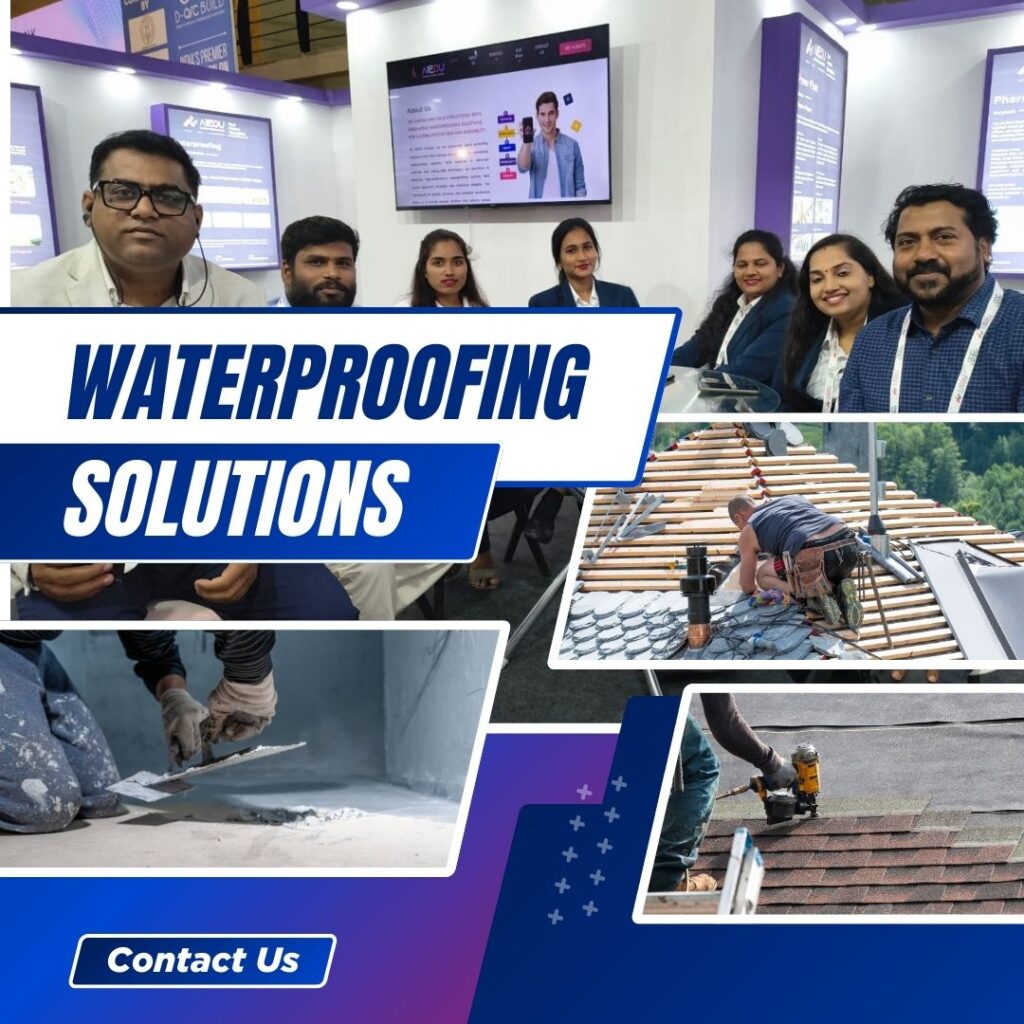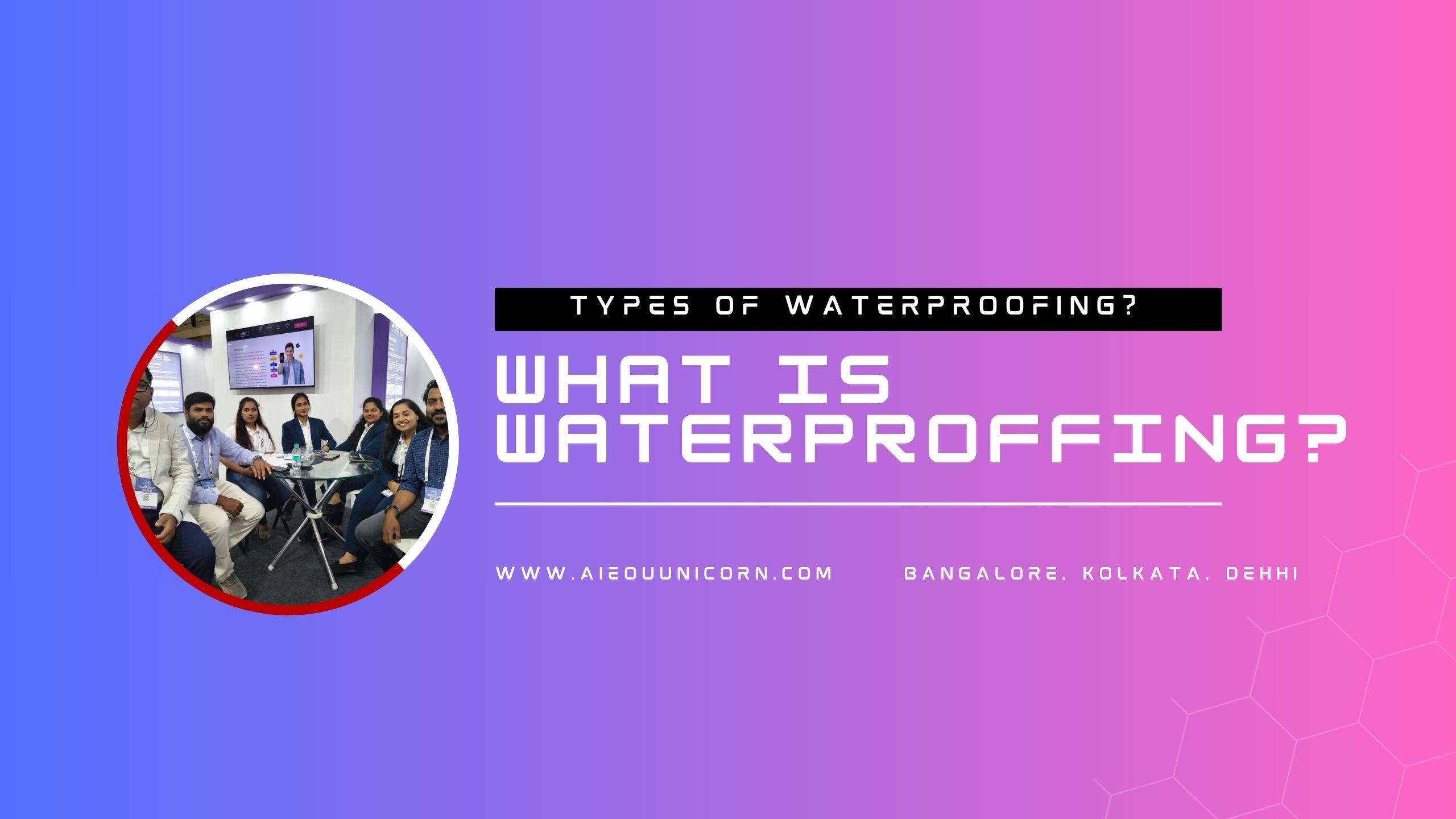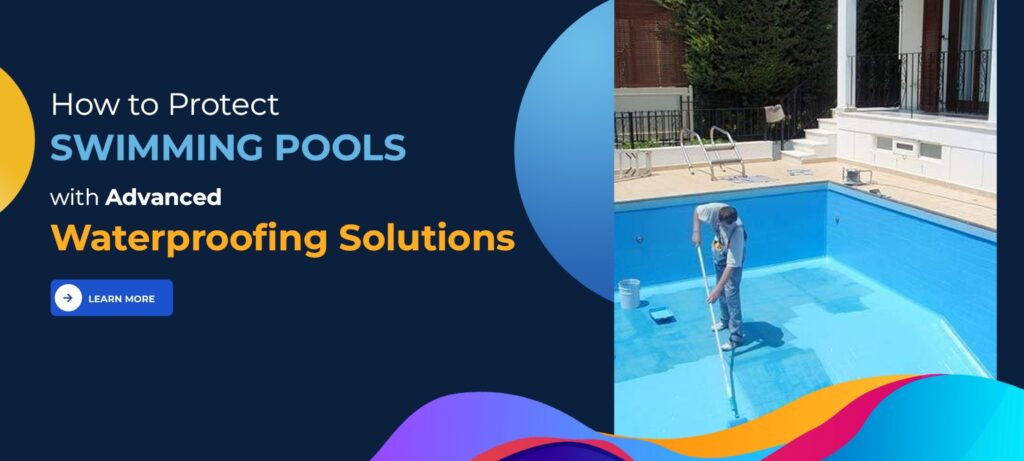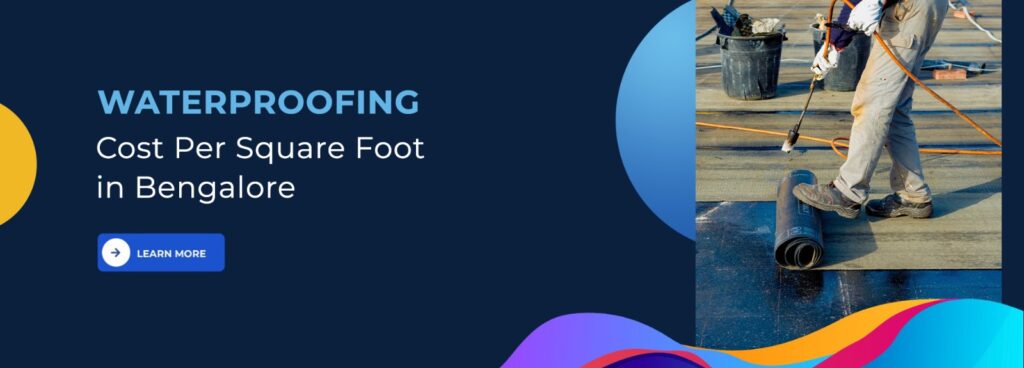Water is one of the biggest enemies of any construction (buildings and infrastructure) because it can cause serious structural damage when it seeps into walls, roofs, basements, or foundations. Cracks, leakages, mold growth, damp patches, corrosion of steel reinforcements, and reduced structural life are all results of poor waterproofing. That’s why waterproofing has become an essential part of modern construction and building maintenance.
At AIEOU Unicorn Pvt. Ltd., we have over 30 years of expertise in delivering advanced waterproofing solutions across Bengaluru, Kolkata, and Delhi. From residential homes to large-scale commercial and industrial projects, our goal is to ensure every structure remains protected, durable, and leak-free.
Here, we explore what waterproofing is, why it is important, and the 10 most common types of waterproofing methods used in residential, commercial, and industrial projects.
What is Waterproofing?

Waterproofing is the process of applying protective layers, membranes, or chemicals to a structure to prevent water ingress and protect it from damage caused by moisture, leaks, or seepage.
In simpler words, waterproofing acts as a shield that keeps water out and strengthens the structure. It is widely applied to roofs, basements, bathrooms, water tanks, swimming pools, foundations, terraces, and retaining walls.
A good waterproofing system ensures:
- Dry and safe interiors
- Longer lifespan of the structure
- Protection against corrosion, cracks, and seepage
- Lower maintenance costs
- Better indoor air quality by preventing mold and mildew
Why is Waterproofing Important?
Many property owners underestimate the importance of waterproofing until serious leakage or seepage issues appear. Here’s why waterproofing is crucial for any building:
- Prevents Structural Damage – Continuous water seepage can weaken concrete, corrode reinforcement steel, and reduce structural strength.
- Increases Property Value – A well-maintained, leak-proof home or building has higher market value.
- Reduces Maintenance Costs – Investing in waterproofing prevents frequent repairs caused by cracks, dampness, and water damage.
- Ensures Healthy Living Spaces – Prevents mold growth, dampness, and musty odors, leading to better air quality.
- Protects Interiors & Assets – Furniture, paint, flooring, and electronics remain safe from moisture damage.
10 Most Common Types of Waterproofing
Now that we understand the importance of waterproofing, let’s dive into the 10 major types of waterproofing systems used in construction today.
1. Cementitious Waterproofing
Cementitious waterproofing is one of the simplest and most widely used methods. As the name suggests, it uses cement-based materials mixed with waterproofing chemicals to form a slurry that can be applied to surfaces.
Applications:
- Bathrooms
- Toilets
- Kitchens
- Water tanks
- Internal wet areas
Advantages:
- Easy to apply and cost-effective
- Readily available materials
- Excellent adhesion to concrete and masonry
Limitations:
- Not flexible, may crack if the surface expands or contracts
- Best suited for indoor applications, not exposed roofs or terraces
2. Liquid Waterproofing Membrane
This method involves applying a thin, liquid coating that forms a flexible, seamless membrane once it dries. It can be applied using a brush, roller, or spray.
Applications:
- Roof terraces
- Balconies
- Podiums
- Exposed concrete surfaces
Advantages:
- Highly flexible and elastic
- Can bridge cracks in concrete
- Seamless finish prevents weak points
Limitations:
- Application requires skilled workmanship
- May need multiple coats for durability
3. Bituminous Coating (Asphalt Coating)
Also called asphalt waterproofing, this method uses a protective bitumen-based coating that is both water-resistant and durable.
Applications:
- Basements
- Foundations
- Retaining walls
- Underground structures
Advantages:
- Strong protective layer
- Resistant to moisture and seepage
- Affordable option for foundations
Limitations:
- Not suitable for exposed areas (sensitive to sunlight and UV rays)
- May become brittle over time
4. Bituminous Membrane Waterproofing
This is one of the most popular methods for low-slope roofs. It comes in the form of pre-fabricated membranes (self-adhesive or torch-applied).
Applications:
- Low-slope and flat roofs
- Basements
- Underground works
Advantages:
- Strong and durable
- Weather-resistant and flexible
- Easy to install with proper tools
Limitations:
- Installation requires heating/torching in some cases
- Needs skilled application to avoid weak joints
5. Polyurethane Waterproofing
Polyurethane (PU) waterproofing provides high flexibility, durability, and chemical resistance. It is ideal for areas exposed to weathering and foot traffic.
Applications:
- Roof terraces
- Balconies
- Parking decks
- Podiums
Advantages:
- Excellent flexibility and crack-bridging ability
- Resistant to weather, chemicals, and UV rays
- Seamless application
Limitations:
- Comparatively expensive
- Surface preparation is critical for durability
6. Crystalline Waterproofing
This method uses special crystalline chemicals that react with water and cement to form crystals inside concrete pores and capillaries. It makes the concrete itself water-resistant.
Applications:
- Basements
- Swimming pools
- Water tanks
- Water retaining structures
Advantages:
- Integral waterproofing – becomes part of the concrete
- Long-lasting and self-healing properties
- Improves structural durability
Limitations:
- Requires professional application
- Initial cost is higher than traditional methods
7. EPDM Rubber Waterproofing
EPDM (Ethylene Propylene Diene Monomer) is a synthetic rubber membrane known for its durability and flexibility.
Applications:
- Industrial roofing
- Ponds and lakes
- Green roofs
- Large-scale commercial roofs
Advantages:
- Very durable and UV resistant
- Eco-friendly and recyclable
- Suitable for both hot and cold climates
Limitations:
- More expensive than other methods
- Installation requires skilled labor
8. Acrylic Waterproofing
Acrylic waterproofing is a liquid-applied system that provides a smooth, seamless finish with good UV resistance.
Applications:
- Roof coatings
- Decorative waterproofing
- Balconies and terraces
Advantages:
- UV-resistant and weatherproof
- Provides an aesthetic finish
- Flexible and easy to apply
Limitations:
- Less durable under heavy water pressure
- Requires reapplication over time
9. PVC Waterproofing Membrane
PVC (Polyvinyl Chloride) membranes are thermoplastic sheets that are heat-welded at joints to form a strong, continuous waterproof layer.
Applications:
- Roofing
- Underground structures
- Tunnels
- Basements
Advantages:
- Strong, flexible, and puncture-resistant
- Long lifespan with low maintenance
- Excellent for large-scale projects
Limitations:
- Requires skilled installation with heat welding
- Higher material cost compared to bituminous membranes
10. Injection Grouting Waterproofing
This method involves injecting PU (Polyurethane) or Epoxy grout directly into cracks, joints, or leakage points to block water ingress.
Applications:
- Leaking basements
- Expansion joints
- Tunnels and underground structures
- Repair of old buildings
Advantages:
- Excellent for repairing leaks without major demolition
- Provides structural strengthening
- Effective in stopping active water ingress
Limitations:
- Not suitable as a primary waterproofing method
- Requires specialized equipment and expertise
✅ Choosing the Right Waterproofing Method
The type of waterproofing you choose depends on:
- Area of application (roof, basement, bathroom, swimming pool, etc.)
- Exposure conditions (indoor, outdoor, heavy rainfall, sun exposure)
- Budget (some solutions are more cost-effective, while others are premium)
- Durability requirements (temporary vs. long-term solution)
For example:
- Bathrooms and kitchens → Cementitious waterproofing
- Flat roofs and balconies → Liquid membrane or PU waterproofing
- Basements → Bituminous coating or crystalline waterproofing
- Large commercial roofs → EPDM or PVC membranes
✅ Conclusion
Waterproofing is not an optional feature but a necessity for every building, whether residential, commercial, or industrial. It protects your structure from water damage, increases its lifespan, and ensures a safe and healthy environment.
From cementitious coatings for bathrooms to EPDM membranes for industrial roofs, there are multiple types of waterproofing available to suit every requirement and budget. Choosing the right system, along with professional application, ensures long-term protection and peace of mind.


